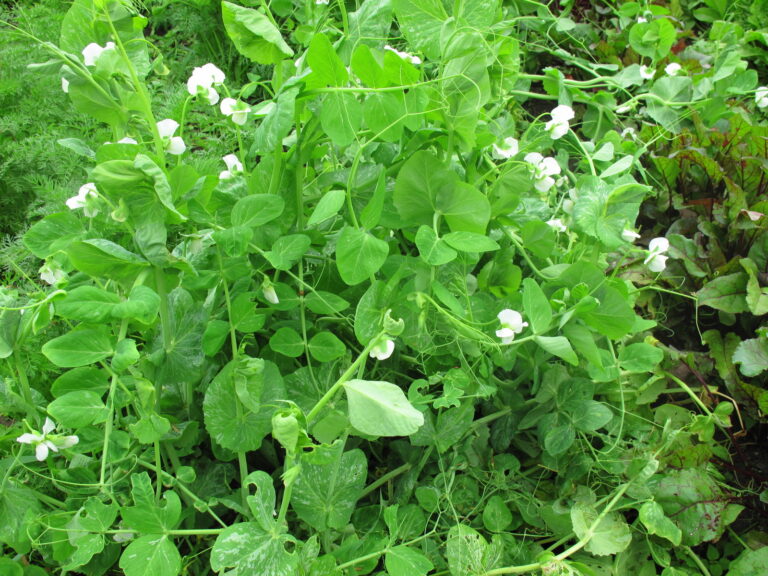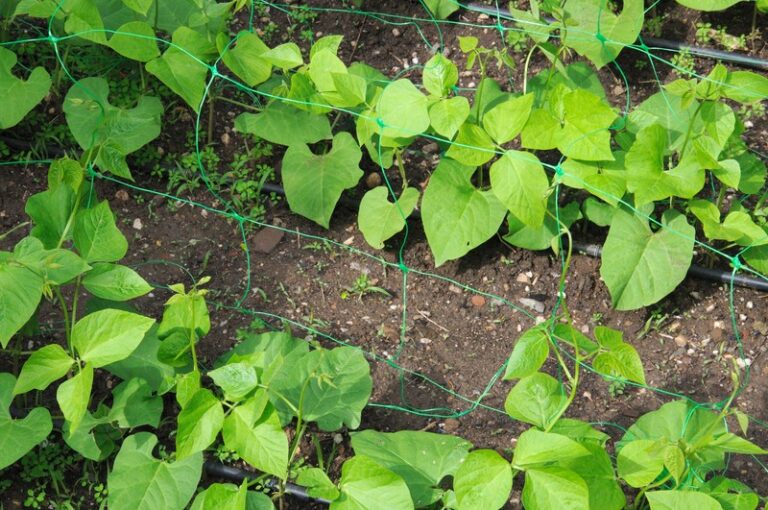How to Harvest Southern Peas at Every Stage: Shelling, Snaps, and Dry Peas
Southern peas—whether black-eyed peas, purple hulls, cream peas, or crowders—are wonderfully versatile. One of the things I love most about growing them is that you can harvest them at three distinct stages, depending on what you want to cook: tender green snaps, fresh shelling peas, or fully mature dry peas for storage.
After growing southern peas for decades in two hot-summer regions (the Central Valley and Sonoma Valley), I’ve learned that timing your harvest has a huge impact on flavor, texture, and overall yield. This guide walks you step-by-step through harvesting southern peas at every stage, using my hands-on experience to help you get the best from your vines.
Understanding the Three Harvest Stages
Southern peas mature in a sequence. Knowing what to look for helps you pick at peak flavor:
- Snap Stage (Young Pods) – pods still flat and crisp
- Shelling Stage (Green-Mature Pods) – pods swollen with plump seeds
- Dry Stage (Fully Mature, Dried on the Vine) – pods dry, brown, rattling with hard seeds
Each stage has its own use in the kitchen and its own harvest technique.
How to Harvest Southern Peas as Snaps (Young Pods)
What to Look For
- Pods are flat or just slightly filled
- Bright green
- Crisp and tender when snapped
In my gardens, snap-stage pods typically appear midseason, starting about 55–65 days after sowing depending on variety and weather.
How to Harvest
- Use two hands—one to hold the vine, one to snap the pod—to avoid damaging stems.
- Harvest every 2–3 days to keep tender pods coming.
- Remove tough or overgrown pods so plants keep producing.
How I Use Them
Snaps cook quickly and behave similarly to green beans. I often sauté them with garlic or steam them lightly for fresh summer meals.
How to Harvest Green Shelling Peas (Mature but Not Dry)
What to Look For
- Pods feel full, with distinct bumps
- Color may shift from bright green to slightly dull green
- Seeds inside are soft, creamy, and fully formed
This is when southern peas taste their very best in my experience—sweet, nutty, and rich.
How to Harvest
- Pick by hand when pods are fully plump.
- Check vines every 2–3 days—they go from perfect to overmature quickly in hot weather.
- Use a bucket or basket to keep pods shaded; they wilt quickly in direct sun.
of all narrative.
How I Use Them
Shelling peas are perfect for:
- Succotash
- Quick simmered peas with onions or bacon
- Fresh salads
These are the peas I harvest the most in July and August.
How to Harvest Dry Southern Peas (Storage Stage)
What to Look For
- Pods turn brown, tan, or straw-colored
- Pods become dry and brittle
- Seeds rattle inside when shaken
- Leaves may start to yellow and vines may die back
In the Central Valley’s hot climate, pods dry extremely fast. In Sonoma Valley, I usually allow peas to reach their final color on the vine, then finish drying under cover if late-summer humidity creeps in.
How to Harvest
- Pull the dry pods by hand or cut entire dry vines and strip pods off later.
- Dry pods further indoors if needed—spread them on screens or trays.
- Shell by hand or rub pods between your palms to release seeds.
- Store peas in airtight containers once seeds are completely hard and dry.
My Tip for Perfect Storage
Freeze dried peas for 48 hours to kill any hidden insect eggs, then store at room temperature. This has saved many batches over the years.
How Frequent Harvesting Affects Yield
Frequent picking = more production.
Based on years of observation:
- Picking snaps stimulates more flowering.
- Picking shelling peas encourages a second flush of pods.
- Leaving all pods to dry reduces total green yield but maximizes storage peas.
Most seasons I harvest a mix—early snaps, lots of shellers, and a final round of dry peas for the pantry.
Troubleshooting Common Harvest Issues
Pods Turning Tough Too Quickly
Likely heat stress; water deeply during flowering and early pod fill.
Pods Mold Before Drying
Humidity or late-season dew—harvest earlier and finish drying indoors.
Uneven Maturity on Vines
Normal for cowpeas. Staggered harvesting is part of the crop’s rhythm.
My Takeaway
Southern peas reward timely harvesting. Over decades of growing them, I’ve learned that understanding each maturity stage—and picking accordingly—gives you the widest range of flavors and uses. Whether you want crisp green snaps, creamy shelling peas, or shelf-stable dry peas, the key is consistent observation and harvesting at the right moment.
Southern Peas Learning Hub
Start Here:
- How to Plant, Grow, and Harvest Southern Peas: A Complete Guide – Overview and complete guide.
- Southern Peas: Essential Planting-to-Harvest Growing Tips – Tips you can use today.
Planning & Preparation
- About Southern Peas: History, Types, and How They Differ from Other Beans – Background, uses, and distinction from other legumes.
- The Best Location for Southern Peas: Soil, Sun, and Garden Bed Prep – Soil, sunlight, and bed preparation.
- When to Plant Southern Peas: Timing for Spring, Summer, and Successive Crops – Sowing schedules for peak yield.
- The Best Southern Pea Varieties: Black-Eyed, Crowder, and Purple Hull Peas – Variety selection based on climate, space, and flavor.
Planting & Early Growth
- How to Plant and Space Southern Peas for Maximum Yield – Planting depth, spacing, and row management.
- How to Grow Southern Peas in Containers: Tips for Small-Space Gardens – Container growing guidance for limited spaces.
Care & Maintenance
- How to Water and Fertilize Southern Peas for Healthy Vines and Pods – Optimal irrigation and feeding practices.
- Seasonal Care Guide for Southern Peas: Weeding, Training, and Midseason Maintenance – Midseason tasks and vine management.
- The Best Companion Plants for Southern Peas (and What to Avoid) – Planting companions for productivity and pest reduction.
Pests & Disease Management
- Southern Peas Pests and Diseases: Identification, Prevention, and Organic Controls – Recognizing problems and implementing organic solutions.
Harvesting & Preservation
- How to Harvest Southern Peas at Every Stage: Shelling, Snaps, and Dry Peas – Picking at different maturity stages.
- How to Store and Preserve Southern Peas: Freezing, Drying, and Long-Term Keeping – Preservation methods for year-round use.




